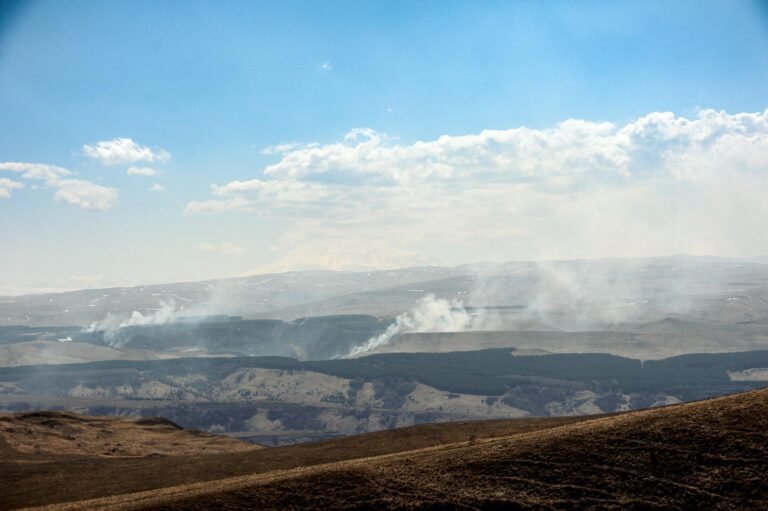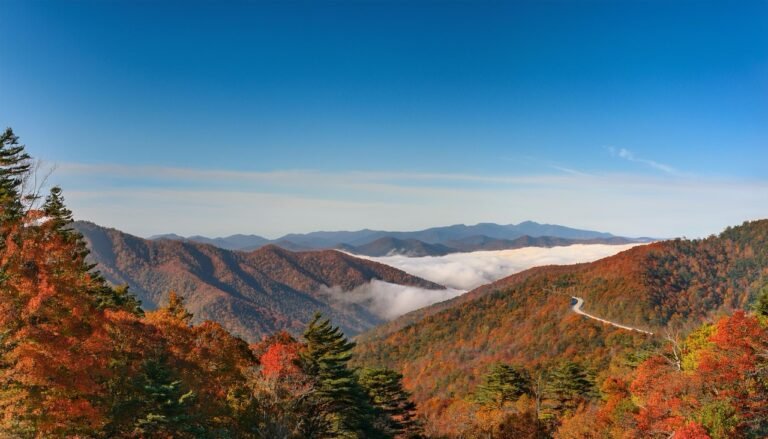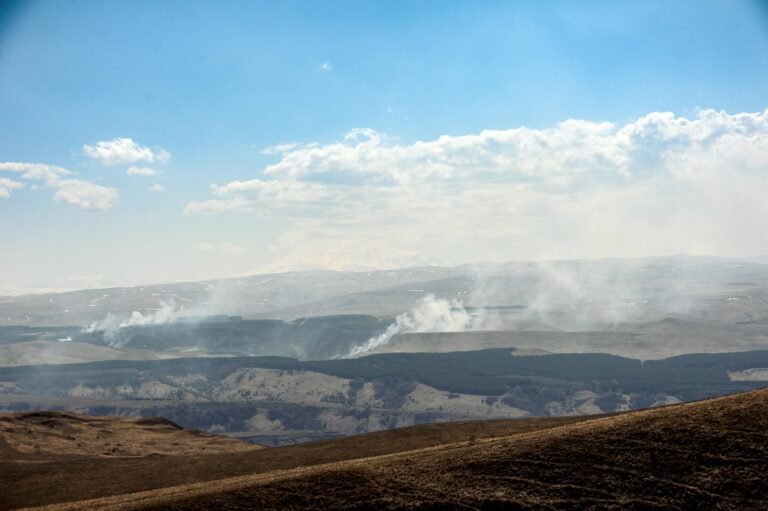Discovering Great Smoky Mountains National Park
What’s the Deal with the Park?
Alright, so you’re itching for an adventure, huh? The Great Smoky Mountains National Park, sprawling over 500,000 acres, sits right between North Carolina and Tennessee. You won’t run out of jaw-dropping sights, rich history, and loads of critters to spot. This place is perfect for a Great Smoky Mountains road trip.
Drive on over to Newfound Gap—no big deal, it’s just the lowest pass you can drive through, sitting all cool at 5,046 feet up. Cruise along the 30 miles of U.S. Route 441 for some killer views of mountains and stops at iconic places like the Appalachian Trail and Mingus Mill (US News Travel).
| Park Feature | Details |
|---|---|
| Total Acreage | 522,427 acres |
| Location | North Carolina and Tennessee |
| Elevation Range | 876 ft to 6,643 ft (Clingmans Dome) |
| Popular Attractions | Newfound Gap, Cades Cove, Clingmans Dome |
Biodiversity That’ll Blow Your Mind
This park’s a smorgasbord of biodiversity, featuring a whopping 1,500+ types of flowering plants, 240 bird species, and about 50 kinds of fish (National Geographic).
During the spring and summer, it’s a rainbow of spring beauties, trillium, and wild geranium. Flame azaleas and rhododendrons give an extra pop of color from April to June (My Smoky Mountain Park). If birdwatching or spying other wildlife is your jam, check the Great Smoky Mountains wildlife page.
| Biodiversity Component | Species Count |
|---|---|
| Flowering Plants | 1,500+ |
| Birds | 240 |
| Fish | ~50 |
Roaming through the park offers endless chances for Great Smoky Mountains sightseeing. If you’re a nature nerd, this place will be your happy place.
Dive into what the park offers; immerse yourself in all its natural wonders. Whether it’s a Great Smoky Mountains vacation or just a quick escape, this place stays on the must-see list. For more tips, swing by the Smoky Mountains visitor guide.
Camping in Great Smoky Mountains NP
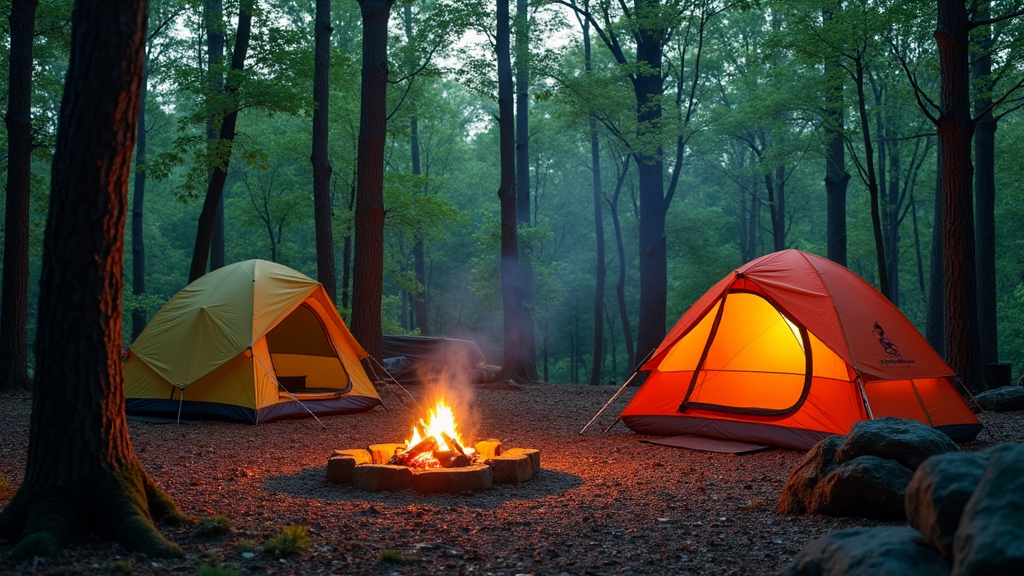
Thinking about a great smoky mountains road trip? A stay at one of the park’s campgrounds could be the highlight of your adventure. Whether you’re a seasoned camper or a newbie, knowing the facilities, how to book a spot, and firewood rules will make your trip smoother.
Campground Facilities
The Great Smoky Mountains National Park has a bunch of campgrounds to fit everyone’s needs. There are 10 developed frontcountry campgrounds. Two go-tos are Cades Cove and Smokemont Campgrounds, which are welcoming campers all year round. The others are open seasonally.
| Campground | Availability | Facilities |
|---|---|---|
| Cades Cove | Year-round | Restrooms, Drinking Water |
| Smokemont | Year-round | Restrooms, Fire Rings, Picnic Tables |
| Elkmont | Seasonal | Restrooms, Fire Rings, Picnic Tables |
| Cataloochee | Seasonal | Restrooms, Horse Campsites |
For detailed info about each campground, check out the National Park Service website.
Reservation Guidelines
Want to guarantee a campsite? Reservations are a must for frontcountry, group, and horse campsites. You can book by dialing 877-444-6777 or heading to Recreation.gov.
| Reservation Type | How to Reserve |
|---|---|
| Frontcountry | Recreation.gov or call 877-444-6777 |
| Group Campgrounds | Recreation.gov or call 877-444-6777 |
| Horse Campsites | Recreation.gov or call 877-444-6777 |
Make sure you book early, especially during busy times like fall and winter.
Firewood Regulations
To keep the park healthy, only heat-treated firewood is allowed. This helps avoid pests and diseases. You can buy heat-treated firewood from local stores near the park or right in the campgrounds.
For more details on what type of firewood you can bring, check the Great Smoky Mountains National Park firewood regulations.
Camping in the Great Smoky Mountains is a fantastic way to get close to nature. You can enjoy lots of activities like hiking trails and wildlife watching. Plan ahead, make your reservations, and dive into an unforgettable great smoky mountains road trip.
Check Out Popular Spots in the Smokies
Get ready for an adventure in the Great Smoky Mountains National Park that you’ll never forget. Here are some must-see attractions to hit up on your Great Smoky Mountains road trip.
Climbing Mount LeConte
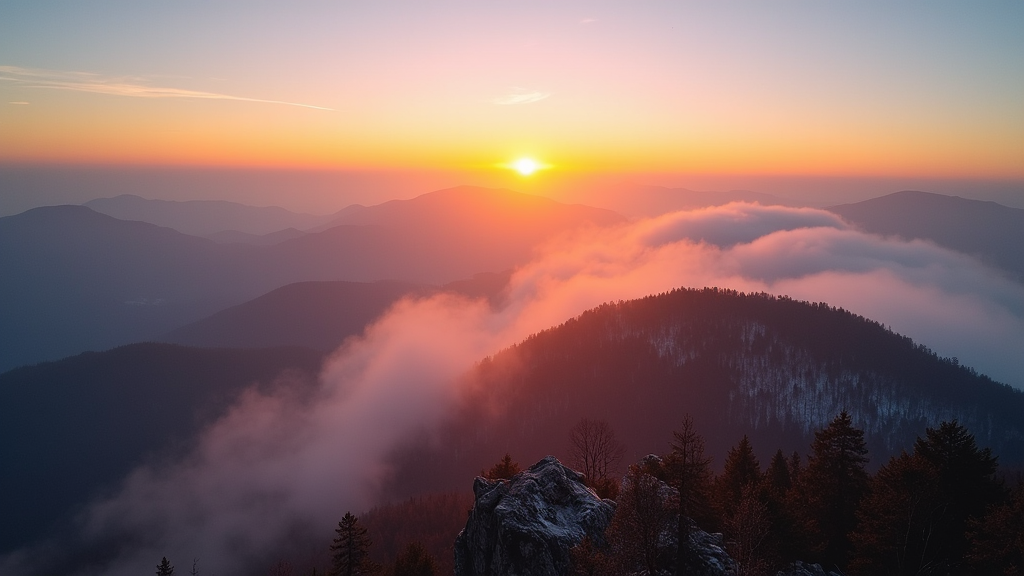
Ever wanted to conquer a peak? Mount LeConte is your go-to. Standing tall at 6,360 feet, it’s the park’s third-highest point. You can only reach the summit’s cozy LeConte Lodge by hiking, but trust me, the views and sunrises are worth every step.
Hiking Trails to LeConte:
| Trail Name | Distance (One-way) | Elevation Gain |
|---|---|---|
| Alum Cave Trail | 5.5 miles | 2,763 feet |
| Rainbow Falls Trail | 6.7 miles | 3,993 feet |
| Boulevard Trail | 8 miles | 1,339 feet |
| Trillium Gap Trail | 8.9 miles | 3,600 feet |
Scenic Drives for the Win

Nothing beats a joyful drive through stunning landscapes. The Roaring Fork Motor Nature Trail is a 6-mile one-way loop that winds past waterfalls, old log cabins, and wildlife (US News Travel).
Don’t miss driving through Cades Cove. This 11-mile loop road is surrounded by 19th-century cabins, churches, and an old grist mill. And hey, keep your eyes peeled for deer, black bears, and wild turkeys (US News Travel).
Must-See Scenic Drives:
| Drive Name | Length | Highlights |
|---|---|---|
| Roaring Fork Motor Nature Trail | 6 miles (one-way) | Waterfalls, historic cabins, wildlife |
| Cades Cove Loop Road | 11 miles (one-way) | Historic buildings, wildlife, scenic views |
| Clingmans Dome Road | 7 miles (one-way) | Panoramic views, hiking trails |
Step Back in Time
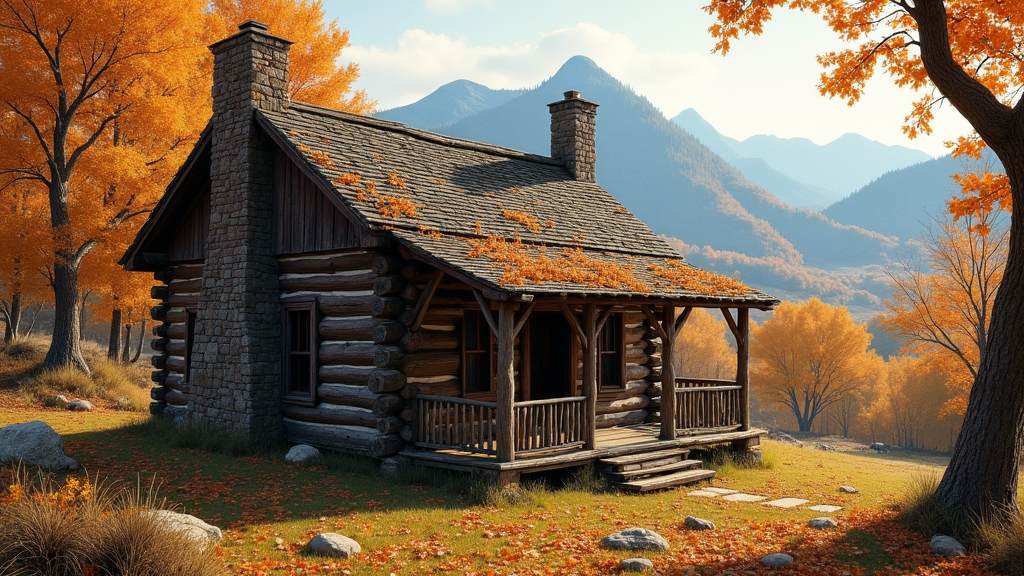
Ever wondered what life was like for early settlers? The park’s got over 90 historic buildings to check out (My Smoky Mountain Park). Cades Cove is filled with cabins and churches from the 1800s. You can even bike the loop road on Wednesdays from May to September when it’s closed to cars.
At Oconaluftee, you’ll find the Mountain Farm Museum with buildings from the late 1800s, and Cataloochee is home to a vintage school, church, and frame houses.
Historic Sites You Can’t Miss:
| Location | Notable Buildings |
|---|---|
| Cades Cove | Cabins, churches, grist mill |
| Oconaluftee | Mountain Farm Museum, historic structures |
| Cataloochee | School, church, frame homes |
Whether you’re hiking up a mountain, taking a scenic drive, or diving into history, your road trip through the Great Smoky Mountains National Park will be packed with unforgettable adventures. For more tips, check out our pages on Great Smoky Mountains sightseeing and Great Smoky Mountains vacation ideas.
Seasonal Highlights
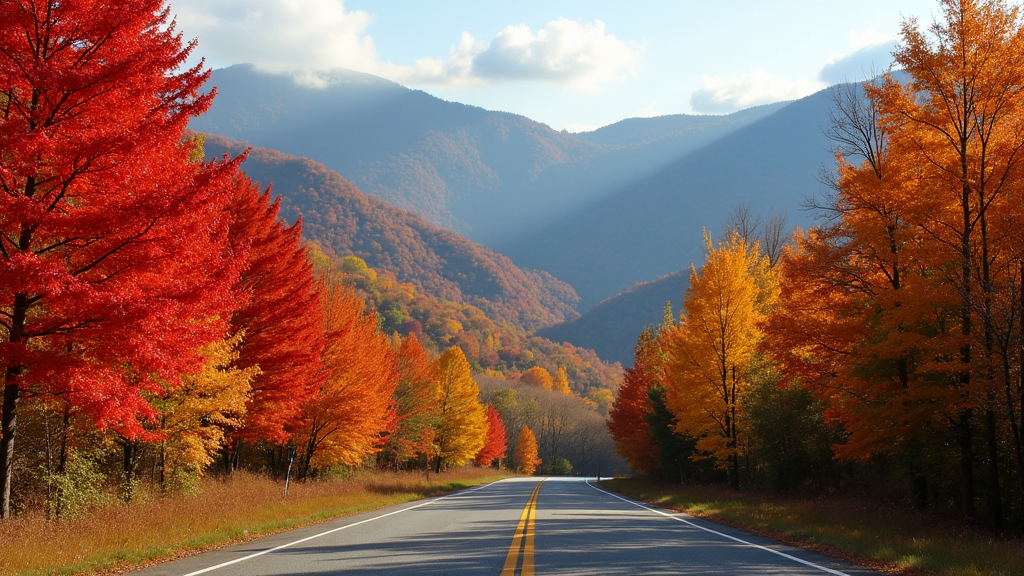
Each season in the Great Smoky Mountains National Park has its own magic. From vibrant fall leaves to delicate spring flowers and serene winter snowscapes, there’s always something special waiting for you on your Great Smoky Mountains road trip.
Fall Colors and Wildlife
Autumn here is like nature showing off. The trees put on a breathtaking display of reds, yellows, and oranges. Whether driving or hiking, higher spots give you the best views of this colorful spectacle. Fall colors usually peak between mid-October and early November. For the ultimate view, hit up Clingmans Dome, the park’s highest point, where you can see up to 200 miles on a clear day.
| Best Time for Fall Colors | Elevation |
|---|---|
| Mid-September | Higher Elevations |
| Mid-October | Lower Elevations |
Wildlife also gets active in the fall. Keep your eyes peeled for deer, black bears, and birds preparing for winter.
Your Ultimate Adventure Awaits: Great Smoky Mountains National Park Camping
Spring Blooms and Showers
Spring turns the park into a blooming paradise with over 1,500 types of flowers coming to life from mid-April to mid-May. Look out for spring beauties, trillium, trout lilies, wild geranium, and orchids. Showy flame azaleas and rhododendrons are also gorgeous, starting to bloom in April at lower elevations and lasting into June at higher spots.
| Flower Type | Blooming Time |
|---|---|
| Spring Beauties, Trillium, Trout Lilies | Mid-April to Mid-May |
| Flame Azaleas, Rhododendrons | April to June |
Spring also means more rain, which brings the park’s rivers and waterfalls to life. Be sure to pack rain gear so you can fully enjoy the lush scenery.
Winter Snow and Fun
The park turns into a snowy escape from October to April. One of the top spots to see snow is the Alum Cave Trail, where icicles hang beautifully from the bluffs.
| Winter Activity | Top Spots |
|---|---|
| Snow Hiking | Alum Cave Trail |
| Winter Wildlife Watching | Cades Cove |
Winter activities here are a blast with options like snow hiking, photography, and wildlife watching. Just bundle up in warm clothes and insulated boots for those snowy trails. For more winter fun, check out our guide on Great Smoky Mountains in the winter.
Knowing the seasonal highlights helps you plan a memorable trip. Don’t miss our Smoky Mountains visitor guide for more tips and information.
Hiking Thrills
Get ready for an adventure in the Great Smoky Mountains National Park. Whether you’re a beginner or a seasoned hiker, there’s something for everyone. Explore some top trails and handy tips to make your hike unforgettable.
Popular Trails
Great Smoky Mountains has some of the best trails. Each one offers awesome views and its own unique challenges. Check out these favorites:
Mount LeConte
Mount LeConte is a must-hike, boasting jaw-dropping views and a chance to chill at LeConte Lodge near the top (National Geographic).
- Elevation: 6,360 feet
- Trail Length: 5–9 miles one way, depending on your route
Alum Cave Trail
This moderately challenging trail features cool rock formations, historical spots, and stunning views.
- Trail Length: 4.4 miles to Alum Cave, 10.2 miles round trip to Mount LeConte
Cades Cove
Great for all ages, this trail offers beautiful cove views and is perfect for wildlife spotting (cades cove smoky mountains).
- Trail Length: An 11-mile loop road with shorter, accessible trails
Clingmans Dome Trail
Though steep, this trail is short and leads to the park’s highest point with sweeping panorama views.
- Elevation: 6,643 feet
- Trail Length: 1 mile round trip
For more trail ideas, click on great smoky mountains scenic drives.
Pro Tips for Hikers
Want to make sure your hike is a blast? Consider these tips:
Prep Like a Pro
- Know Your Route: Familiarize yourself with the trail and carry a map (smoky mountains visitor guide).
- Weather Check: Mountain weather can be tricky. Always check the forecast before heading out.
- Dress the Part: Sturdy hiking boots and moisture-resistant clothes are must-haves.
Safety First
- Tell a Friend: Share your hiking plans and estimated return time with someone.
- Hydrate: Bring plenty of water and snacks to keep your energy up.
- Wildlife Savvy: Keep your distance from animals and know what to do if you encounter them (great smoky mountains wildlife).
Pack Essentials
- First Aid Kit: Basic first aid can save the day.
- Navigation Tools: Bring a map, compass, or GPS.
- Protective Gear: Sunscreen, bug spray, and weather-appropriate clothing.
Trail Etiquette
- Leave No Trace: Take all your trash with you and stick to designated trails.
- Yield Right: Cyclists yield to hikers, and everyone gives way to horses.
These tips will help you make the most of your great smoky mountains road trip and enjoy all the trails the park offers. Want more hiking hacks and great recommendations? Have a look at our guide on tips for straightening curly hair (even hikers like to switch it up sometimes!).
Practical Visitor Tips
Best Times to Visit
Choosing when to visit the Great Smoky Mountains National Park can make or break your adventure. Every season offers unique charm, but some periods might suit your plans better than others.
- Fall: The fall, from mid-October to early November, is prime time. The leaves put on a spectacular show, turning red, orange, and yellow. For the best views of this autumnal bliss, head over to Clingmans Dome Trail, Tennessee’s rooftop, where you can see up to 200 miles on a clear day (Smoky Mountain National Park). Check out our post on Great Smoky Mountains in the Fall for more info.
- Summer: This season means crowds and high hotel prices, especially on hotspot routes like the Cades Cove Loop and Newfound Gap Road. It’s humid, but worth it for the abundance of outdoor fun and sightseeing (US News).
- Winter: Winters are mild with a kick. The high spots get pretty cold, mid-30s, while the low areas sit around 50°F. January and February bring snow, making it perfect for winter escapades (US News). Curious about winter? Peek at our guide on Great Smoky Mountains in Winter.
- Spring: This is the flowers’ time to shine, and with moderate rainfalls, it calls out to hikers and nature buffs.
| Season | Highlights | Temperatures | Notes |
|---|---|---|---|
| Fall | Fall Foliage | Cool, less humid | Stunning views |
| Summer | Activities | Hot, crowded | Pricey stays |
| Winter | Snow | Cold at higher spots | Cheaper stays |
| Spring | Wildflowers | Mild, some rain | Perfect for hikes |
Park Entry and Access Points
You can jump into the Great Smoky Mountains National Park from several spots.
- Sugarlands Entrance: By Gatlinburg, ideal if you’re coming from the north.
- Oconaluftee Entrance: Near Cherokee, perfect for those coming from the south.
For the full 411, see our Smoky Mountains Visitor Guide.
Safety Tips and Gear
Safety first! Here’s what you should keep in mind:
- Weather Prep: It can switch up on you quick, especially up high. Always check the forecast and layer up.
- Right Gear: Rock sturdy hiking boots and pack a map, compass, and a first-aid kit. For hiking know-how, hit up our Hiking Tips and Recommendations.
- Stay Hydrated and Fed: Always bring enough water and snacks. Dehydration can sneak up when you least expect it.
- Wildlife: Keep your distance from critters like bears and elk. Don’t feed them! Check out our Wildlife Safety Guidelines.
- Fire Safety: Follow all firewood rules if you’re camping. Learn more about it in our Firewood Regulations.
- Emergency Plan: Let someone know your hiking route and expected return time.
By staying prepped and geared up, you’ll have a blast at the park without a hitch.


